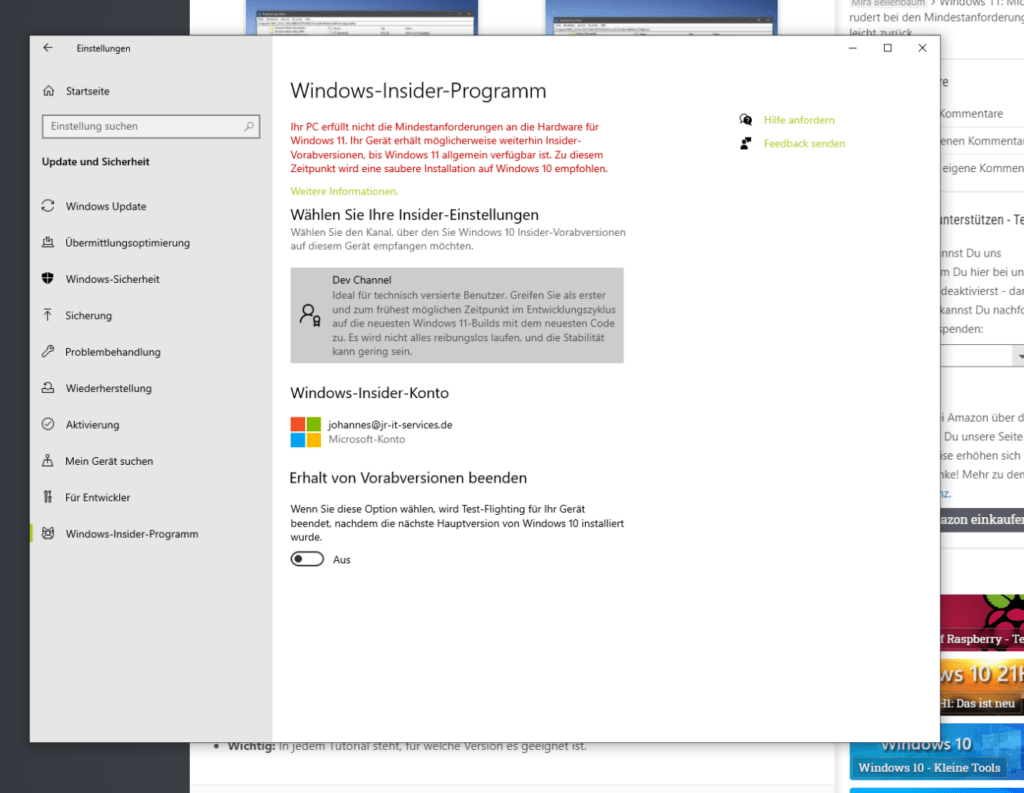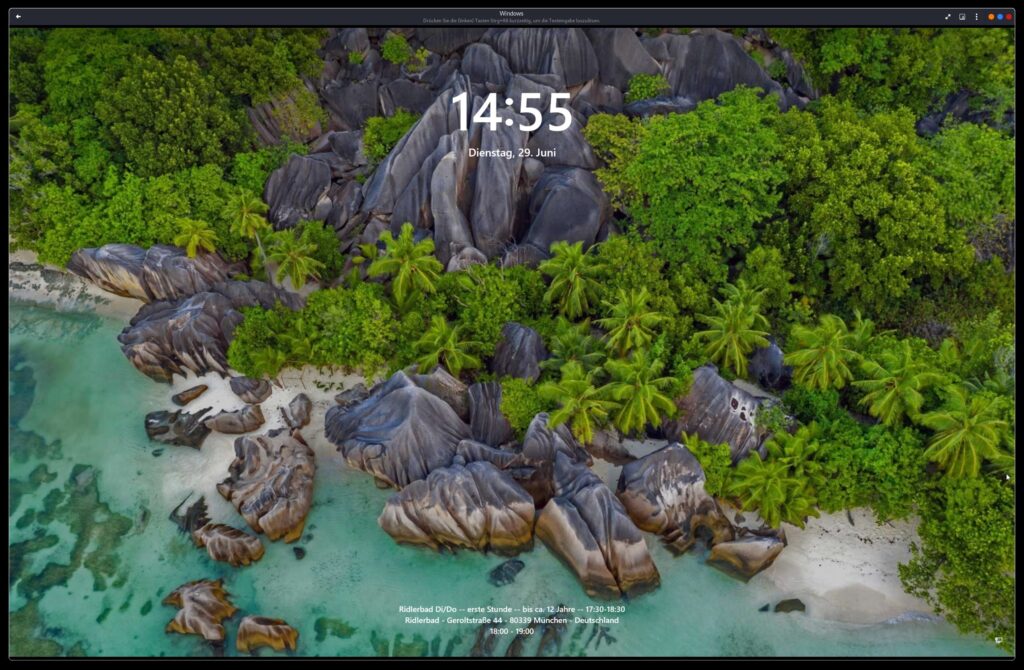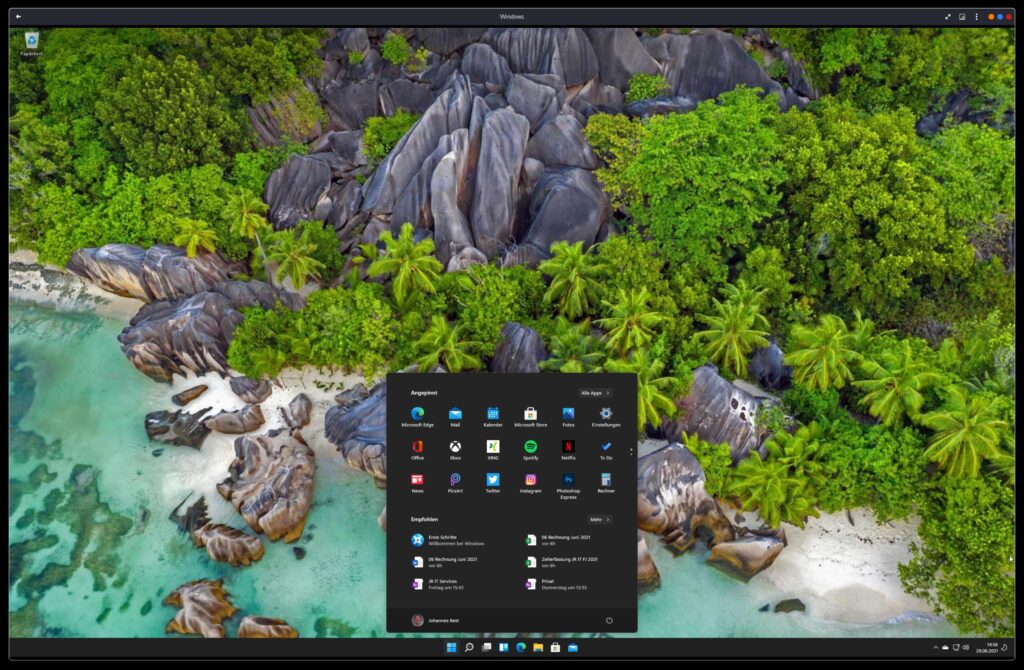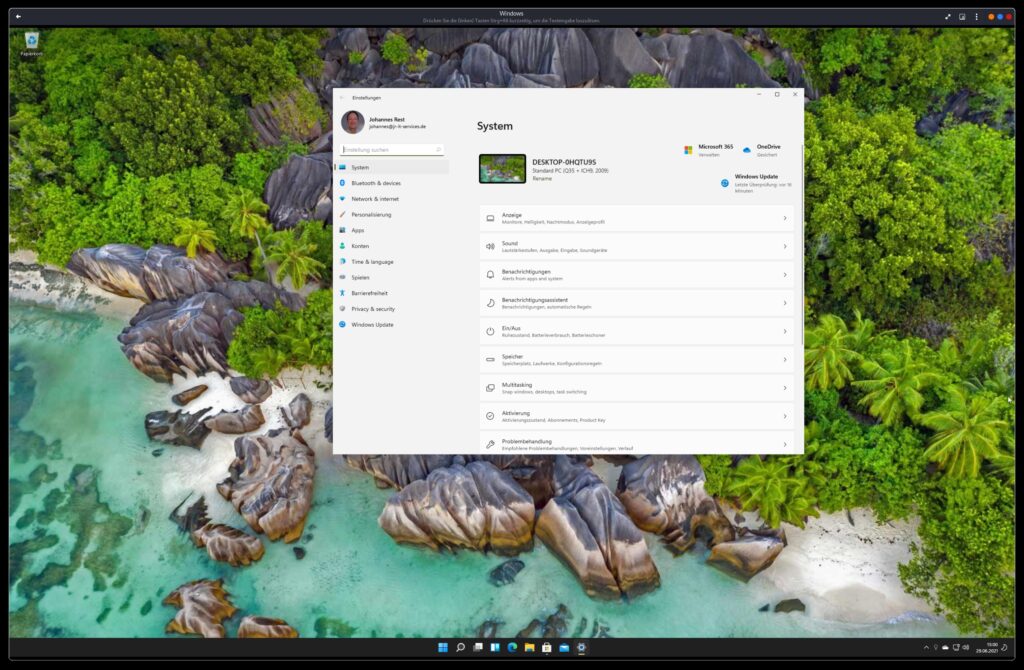At the moment, the new Windows 11 is present in all media. Besides the wonderful and beautiful things that the new operating system will bring, the increased minimum hardware requirements are the main topic. There are requirements for memory, CPU (Intel 8th Gen and higher) and also TPM 2.0. Therefore, I wanted to test this in practice and install Windows 11 on my workstation (Fedora 34) in KWM. This configuration is guaranteed not what you would call a supported platform.
After I was able to install Windows 10 via Gnome Boxes without any problems, I found out that after applying all patches I could only select the ReleasePreview mode in the Windows Insider program. Dev and therefore Windows 11 was not offered to me.
Well, that was no surprise. After I could „convince“ Windows 10 to include me in Dev (which requires two local adjustments), I could install the first Windows 11 Preview Build:

Installing Windows 11
As you can see the text that Microsoft is displaying here is quite interesting. It states that the current machine clearly does not meet the Windows 11 minimum requirements. It might get future Windows 11 updates but once Windows 11 is released a „clean install“ on Windows 10 is strongly recommended.
Long sentences… but it works. The installation contines without any problems, despite the fact that machine has NO TPM at all and is running Linux as its kernel and KWM as the virtualization layer. After a while I do get the following:
Then after login, you’ll see the following:
And its performance is really good. Needless to say that the workstation itself would never ever get Windows 11, as it does not meet its hardware requirements. BUT it looks like that not something that is carved in marble. And it makes sense for Microsoft to have as many computer as possible run the new OS.
So I’m going to go out on a limb and say that almost all computers will be able to get Windows 11 in the end. Not everything will be supported (TPM etc.) and the performance might not be great here and there. But I think it makes sense for Microsoft not to get another operating system variant… which then also needs support…
But that is my personal opinion.
Views: 25




with virt-manager, you can create a VM with emulated TPM2 and Secureboot. Once created and installed, you can use that VM in gnome boxes as well.
Hi Dave,
thanks a lot for this information! I have to dive more into virt-manager more to find out how exactly I create an emulated TPM2 and Secureboot. But I wasn’t aware the these options exist… Thanks!
Hi Neuro,
Boxes is a tool that is intended on user „based“ virtualization (look for the term KVM user session). That means Images will be created within your account/home directory. Virt-Manager also allows to create virtual maschines in the standard location for KVM, which normally is /var/lib/libvirt/images. Those images you will not see in Boxes. What you can do is to export the W11 image config to xml with „virsh export > w11.xml“ (or something like that) and copy the virtual disk image of W11 to your home directory. Of course you have to change the content of w11.xml to find your new image correctly. But if made correctly you should be able to re-import your w11.xml using virsh again.